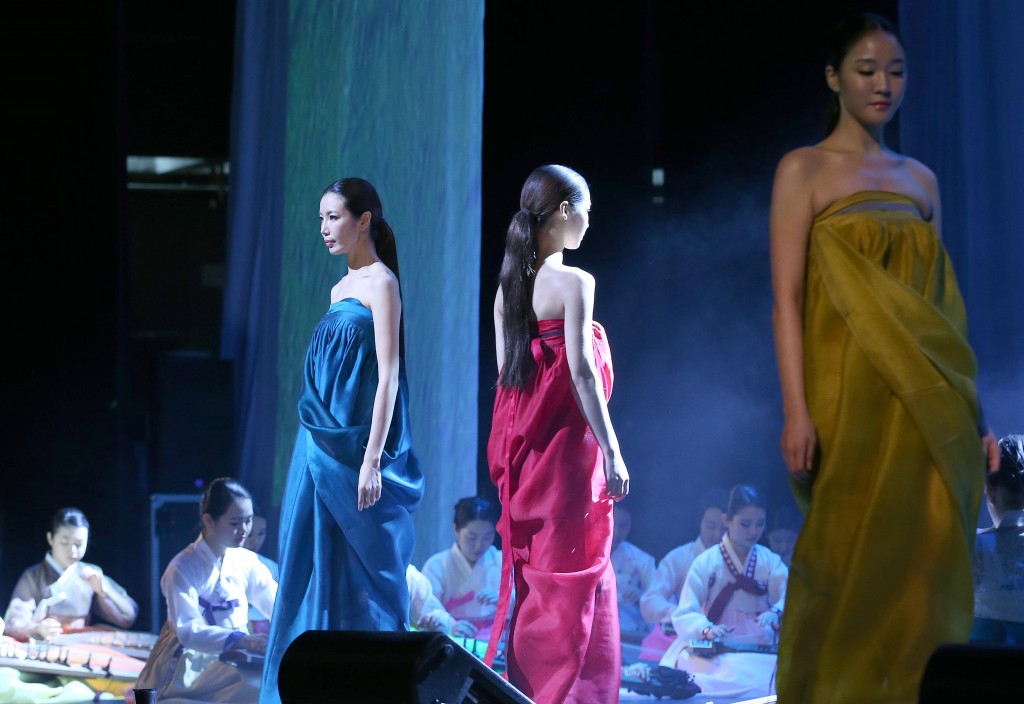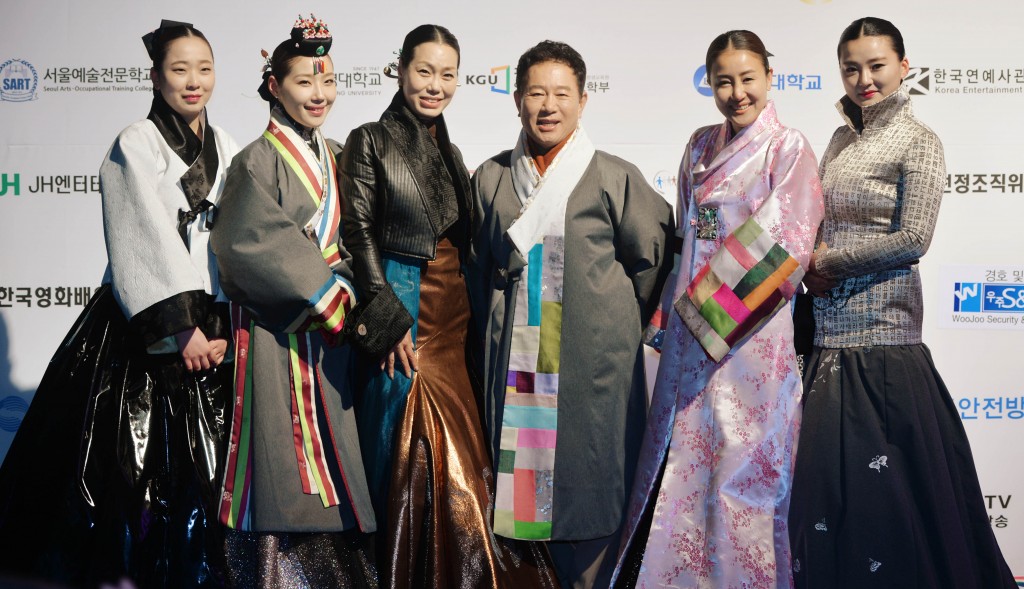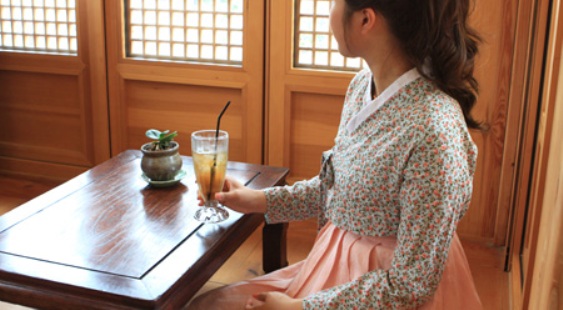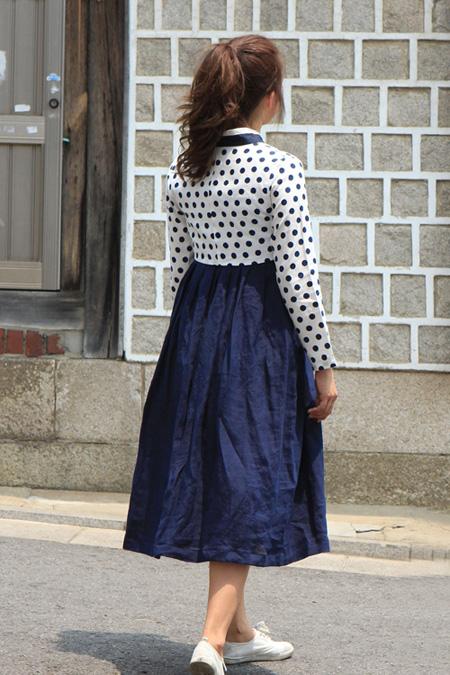- California Assembly OKs highest minimum wage in nation
- S. Korea unveils first graphic cigarette warnings
- US joins with South Korea, Japan in bid to deter North Korea
- LPGA golfer Chun In-gee finally back in action
- S. Korea won’t be top seed in final World Cup qualification round
- US men’s soccer misses 2nd straight Olympics
- US back on track in qualifying with 4-0 win over Guatemala
- High-intensity workout injuries spawn cottage industry
- CDC expands range of Zika mosquitoes into parts of Northeast
- Who knew? ‘The Walking Dead’ is helping families connect
Hanbok trend draws mixed responses
By The Korea Times Seoul staff
Hanbok, or traditional Korean attire, has mostly disappeared in the highly modernized city of Seoul, with the exception of weddings or national holidays such as Seollal or Lunar New Year and Chuseok or Korean Thanksgiving.
But hanbok has recently been weaving its way into modern-day clothes in styles that are captivating young women.
Hemlines have gone up, traditional designs simplified and modern patterns incorporated to make appealing outfits for modern women.
Today, in a trendy area such as Hongdae, you may come across someone clad in a T-shirt and a hanbok skirt. While these modern styles also come as a complete outfit of a “jeogori(jacket)” and skirt, mix and matching is more popular. Incorporating pieces of modern-style hanbok has kicked off as a trend in Seoul.
That doesn’t mean everyone is welcoming it.
Kim Ae-ran, 30, who likes to wear modern styles of the traditional costume, said people do not always approve of her outfits.
“I often wear modernized hanbok, which has a shorter skirt than the traditional one, but some elderly people say it isn’t appropriate,” Kim explained.
She said many people have a narrow definition when it comes to tradition.
Many others agree.
“Modernized hanbok can be appealing but it might not be so effective in promoting Korea, because it looks different from the traditional costume,” said a blogger with the ID: lukt***n. ”Foreigners who have not seen hanbok before would not be able to tell what the modernized outfits represent.”

Designer Lee Young-hee’s traditional Korean hanbok fashion show is underway at an event in Cheongju City, North Chungcheong Province, on March 9, 2015. (Yonhap)

Mok Plus CEO Mok Eun-jung, third from left, attended the Oscars ceremony in a hanbok alongside a Hollywood actress this year. (NEWSis)

















